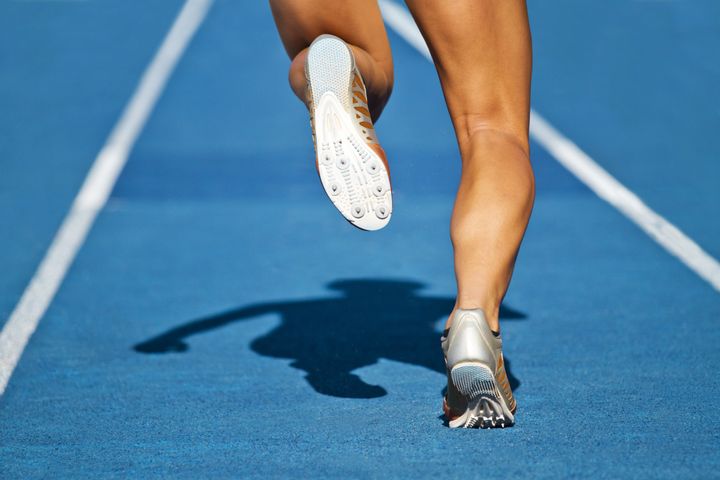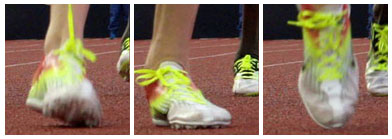
At the 2012 Olympic Trials, I was able to have access to the field during the 5k and 10k races. It was exciting to watch Galen Rupp break Steve Prefontaine's Olympic Trials record for the 10k, averaging close to 4:20 per mile. The finish of the men's 5k was intense with Galen Rupp edging out Bernard Lagat even though Lagat had a slightly faster final lap. The women's 5k was filled with drama as Julia Lucas was not quite able to hang on to make the Olympic team, getting edged out by Kim Conley, who ran her fasted 5k ever. I positioned cameras during these races in order to observe the foot strikes of elite distance runners.
For years, runners, coaches and forum posters have debated on how foot strike is connected with injury and performance. After hours of reading, discussing, and debating, no consensus has been made. Many people believe each person should naturally use the foot strike that they naturally prefer. I would advise that this is a good choice. However, something has been overlooked by most people with the focus on categorizing people into these three foot strikes. All the discussions I've read have focused on the side view. However, our ankles and feet can do much more than point up and down from a side view. Our feet can be rotated around three different axis.
During the 10k races, I set up a camera from a side view to see whether runners were using heel, mid-foot or forefoot strikes.
During the 5k race, I set up a camera from a near front view to see the foot rotation from a different perspective.
After viewing these foot strikes from a front view, I realized the question of foot strike is not one-dimensional. While the side-view position of the foot is worth considering, the other two planes should not be ignored. From the front view, it is clear that runners utilize varying degrees of pronation to absorb the shock of landing (demonstrated with a rotation of the foot from a front view). Many runners, also land with a mid-foot strike, then rotate the heel inwards (rotation of the foot from a top view).

As these positions are considered from all three planes, a much better understanding of what the foot goes through during ground contact can be determined. However, a lot more confusion may also be added to the ongoing discussions of foot strikes.
- Changing a person's foot strike increases injury risk of the foot and lower leg. Even 10 weeks seems to be too short of a time to make a transition safely.
- The type of foot strike a person prefers at some given speed is not connected with performance. Heel strikers typically progress to a mid-foot strike as they increase their running speed. However, the type of foot strike found early in a race when people are running equal speeds cannot be used to determine the outcome of the race.
- A mid-foot strike is associated with greater stresses on the foot and ankle, but lower stresses on the hip and knee. In the end, most studies show no difference in total number of injuries with various foot strikes.